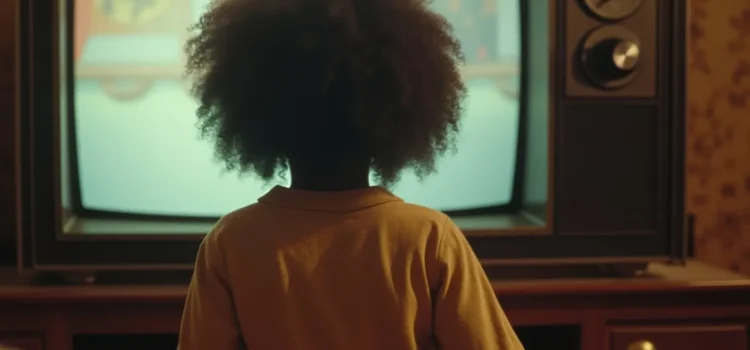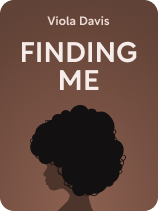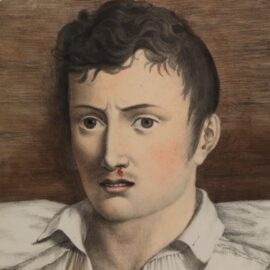

This article is an excerpt from the Shortform book guide to "Finding Me" by Viola Davis. Shortform has the world's best summaries and analyses of books you should be reading.
Like this article? Sign up for a free trial here.
How did Viola Davis’s childhood experiences shape her identity? What was her dream as a child?
Viola Davis’s early life was marked by poverty, racism, and family struggles. Her journey from a challenging childhood to becoming a celebrated actress is a story of resilience and self-discovery. She decided to forge a path to healing and self-acceptance.
Keep reading to learn how Viola Davis’s childhood experiences influenced her life and career—and how she transformed adversity into strength.
Viola Davis’s Early Life
According to Davis, there’s a representative story from her childhood that’s shaped much of her life. When she was in third grade, she would race home from school every day chased by a group of mostly white boys. The boys would run after her, throwing bricks and stones, calling her the n-word, and telling her how ugly she was. When Viola told her mother, her mom said that Viola had to stop running and stand up for herself. And the next day, she did.
But, as Davis explains, she still sometimes feels like that little girl—always running, trying to fit in, and believing herself unworthy. According to Davis, her life’s work has been about learning to love herself and acknowledging the beauty and strength of her younger self.
| The Long-Term Impact of Racial Trauma Throughout the memoir, Davis explores how experiences of racial trauma have impacted her self-perception and identity. In Why Are All the Black Kids Sitting Together in the Cafeteria?, psychologist and educator Beverly Tatum discusses how experiences of racism can negatively affect young individuals’ racial identity development. Tatum explains how these experiences shape young people’s understanding of their position within society and affect their sense of self-worth. She highlights that internalizing these experiences can lead to challenges in self-acceptance and the formation of a healthy racial identity, especially during adolescence. Davis’s experiences of racism as a child made her question her own self-worth long into adulthood. To counteract the negative impacts of racism, like those experienced by Davis, Tatum recommends creating supportive environments that can help young people understand and process their experiences of racism, thereby fostering resilience and a positive sense of identity. |
According to Davis, her life has been a process of learning how to love herself and accept all of who she is—the successful woman she’s become and the scared and hurt little girl she once was, knowing that who she is now is in large part thanks to the resilience and courage of her younger self.
(Shortform note: Davis characterizes her younger self and her present adult self as if they’re two separate individuals. This portrayal dovetails with Richard Schwartz’s Internal Family Systems (IFS) model, as explained in No Bad Parts. Schwartz theorizes that the psyche is made up of multiple parts, each with positive intentions, even if they bear burdens from past traumas. From this perspective, the scared child that Davis was and the resilient adult she has become represent different parts of her that are both seeking healing and recognition. Schwartz argues that integrating your different parts through self-compassion, as Davis narrates, allows you to develop a unified sense of self, enhancing your overall well-being and improving how you navigate relationships and life’s challenges.)
Davis’s childhood was marked by deep love—but also traumatic poverty and abuse. She was born on August 11, 1965, in St. Matthews, South Carolina in the same one-room house where her maternal grandparents had lived when they worked as sharecroppers on a plantation. Davis’s mother, born Mae Alice but known to Davis as MaMama, was the oldest of 18 children, only 11 of whom survived to adulthood. Davis’s father, Dan Davis, was also born in St. Matthews, but he ran away from home at 15 before finding work as a horse groomer. Neither of Davis’s parents continued their education past middle school, and Davis suspects her father stopped attending school as early as second grade.
| Historical Context: Sharecropping The system of sharecropping emerged in the American South in the late 1860s, following the Civil War and the abolition of slavery. Sharecropping replaced the plantation economy after slavery ended, offering freed African American slaves and poor whites a chance to work land in exchange for a share of the crops, not wages. This setup meant they’d agree with the landowners on how to split the harvest, but often, after deducting costs for seeds, tools, housing, and other essentials—all controlled by the landowner—the sharecropper ended up with barely any profit. On paper, sharecropping promised a route to economic independence. However, it frequently devolved into an exploitative trap that mired sharecroppers in debt and poverty. Essentially, this system maintained the social and economic inequalities reminiscent of pre-Civil War times. Understanding the cycle of debt that sharecroppers faced provides context to better understand the nature of intergenerational poverty that Davis faced as a child. |
Davis’s parents married young. Their first child, John Henry, was born when Mae Alice was only 15. The couple went on to have five more children: Dianne, Anita, Deloris, Viola, and Danielle. Davis recounts that her father was an alcoholic, unfaithful, and often abusive to his wife and six children. However, Davis’s mother and father remained together until her father’s death from pancreatic cancer in 2006. Davis acknowledges that despite her parents’ flaws and the trauma of her childhood, she learned how to navigate the world from them, and she always knew both her parents loved her deeply.
(Shortform note: In an interview on The Breakfast Club, Davis talks about how she forgave her parents for the trauma of her childhood, saying that in writing her memoir she realized that her parents did the best they could with what they had. Davis’s deep love for her parents is evident in how she speaks about them. When Davis won her first Oscar for her role in Fences, she ended her acceptance speech by tearfully thanking her parents, Dan and Mae Alice, who she described as the center of her universe. She said that for better or for worse, they taught her good from bad, and she’s grateful that they were the people who raised her.)
When Davis was still a baby, her family moved from St. Matthews to Central Falls, Rhode Island, in part because it was home to two of the biggest racetracks in the country—Lincoln Downs and Narragansett Racetrack—where her father hoped to get a job grooming horses.
(Shortform note: Davis’s family’s move from St. Matthews to Central Falls, Rhode Island, reflects the broader trends of the Great Migration, which saw over six million African Americans relocating from the rural South to Northern and Western cities between 1916 and 1970. Motivated by the pursuit of better economic opportunities and the desire to escape systemic racism and segregation, this migration reshaped the demographics of America’s cities. The mention of the horse racing industry as an employment opportunity for Davis’s father highlights the diverse range of jobs that attracted migrants, illustrating how many sought work in established industries, while others pursued niche sectors in their new environments.)
Davis describes her family growing up as poorer than poor. She explains that their first apartment was nice enough when they first moved, but when the building was condemned it became infested with rats, and the family sometimes went without heat, gas, or hot water. There were also sporadic fires due to faulty wiring in the building. Davis’s family depended on food stamps and the charity of a local grocer to feed themselves, and the girls stole occasionally when necessary.
| The Root Causes of Poverty in America The poverty Davis grew up experiencing isn’t uncommon for children in the United States. According to Matthew Desmond, author of Poverty, By America, 1 in 8 children in America grow up in poverty. Desmond debunks false explanations for poverty, including the perceived lack of work ethic of people living in poverty. Instead, Desmond argues that poverty persists because wealthy Americans benefit from exploiting poorer Americans. For example, he points to how big corporations benefit from low-wage labor that allows them to maximize profits, while workers don’t make enough to live on. Desmond advocates for empowering the poor through economic and political agency, strengthening unions, creating paths to homeownership, implementing inclusive zoning policies, and cracking down on welfare for the rich. He argues that by giving the poor more control over their own economic and political destinies, society can help break the cycle of poverty and provide opportunities for upward mobility. |
According to Davis, her parents tried to infuse joy and ritual into their children’s lives whenever possible. However, when Davis describes her time in Central Falls, she says she mostly remembers feeling shame. She explains how the burden of racism and generational trauma, combined with a struggle to meet basic needs, didn’t allow her time or space to think of anything beyond her basic survival. Because of these experiences, Davis internalized the idea that she was somehow bad and didn’t deserve anything more than she had—messages that had a lasting impact on her life, emotional well-being, and future relationships.
(Shortform note: The feelings of shame and self-doubt described by Davis are symptoms of what psychologists call internalized oppression. Internalized oppression occurs when individuals from oppressed or marginalized groups internalize the beliefs, stereotypes, and ideologies that permeate the dominant culture, in this care white culture. In his book Black Skin, White Masks, philosopher and psychiatrist Franz Fanon examines the psychological effects of colonization and racism on individuals of African descent, explaining how people internalize the dominant (white) culture’s ideals, values, and standards of beauty, leading to self-hatred, feelings of inferiority, and the rejection of their own cultural identity.)
According to Davis, her oldest sister Dianne was the one who inspired her to dream bigger than what she knew. When Davis was only five, her sister told her that if she wanted something different for herself, she needed to decide what she wanted to be and then work hard to get there.
(Shortform note: Many experts would agree with Dianne’s advice to establish a clear goal and work hard to get there. In The 7 Habits of Highly Effective People, Stephen Covey argues that you have to imagine the life you want before you can achieve it. He explains that envisioning your goal keeps you focused on your destination amid daily demands and distractions. In Awaken the Giant Within, Tony Robbins takes Covey’s point a step further, arguing that intensely focusing on your goals also works on a subconscious level by triggering a sort of radar in your brain that directs your attention to resources that can help you achieve those goals—a radar that some speculate may be linked to an area of the brain called the reticular activating system.)
The Dream
Davis says she figured out what she wanted to be when she was about nine years old. One night, while watching TV, Davis saw Cicely Tyson performing in The Autobiography of Miss Jane Pittman. Davis had never seen a dark-skinned actor before—someone that looked like her. It was then that Davis knew she wanted to be an actor.
(Shortform note: Cicely Tyson was a trailblazing American actress and model whose career spanned more than seven decades. Like Davis, Tyson was known for her commitment to portraying African American women with dignity and complexity, refusing parts that perpetuated stereotypes. She received an Oscar nomination for her role in Sounder (1972) and an Emmy for her performance in The Autobiography of Miss Jane Pittman (1974). Tyson’s impact on Davis came full circle when Tyson played the role of Annalise Keating’s stubborn and fiercely loving mother on How to Get Away With Murder, giving Davis the opportunity to share the screen with her first inspiration.)
Not long after, Davis had her first performance for a skit competition hosted by Central Falls Parks & Recreation. She and her sisters wrote an original skit called “The Life Saver Show,” inspired by Monty Hall’s Let’s Make a Deal. The sisters rehearsed endlessly and ended up winning first prize. Davis recalls how proud and excited they all were, as if their winning was proof that they really mattered.
(Shortform note: Viola Davis, who acknowledges the significant impact of her early encounters with the arts, contributes to arts initiatives in her hometown of Central Falls. In 2020, she donated $10,000 to the International Thespian Society at Central Falls High School, where her sister, Deloris Grant, is in charge. Davis’s philanthropy concentrates on supporting emerging talent in her local community.)
According to Davis, acting was more than something she enjoyed doing. If she became successful, acting could be a way to build a more stable life for herself. But she explains that the process of becoming a character was also healing—a way to use her craft to quietly work through personal issues. Acting became Davis’s path to not only professional success but also personal healing, acceptance, and a sense of self-worth.
(Shortform note: Davis’s reflection on the role of acting in her life illustrates the therapeutic benefits of drama. According to the North American Drama Therapy Association, drama therapy is the intentional use of drama and theater-based activities to achieve therapeutic goals. Practitioners explain that through the act of dramatization, individuals can explore their identities, express emotions, and confront challenges in a safe and structured environment. This methodology aligns with Davis’s experiences, where the immersive process of becoming a character allowed her to navigate and heal from her personal traumas.)

———End of Preview———
Like what you just read? Read the rest of the world's best book summary and analysis of Viola Davis's "Finding Me" at Shortform.
Here's what you'll find in our full Finding Me summary:
- The story of Viola Davis’s rise from the depths of poverty to the heights of Hollywood stardom
- How acting became a beacon of hope for Davis and a path toward self-discovery
- What Davis does beyond her acting career






